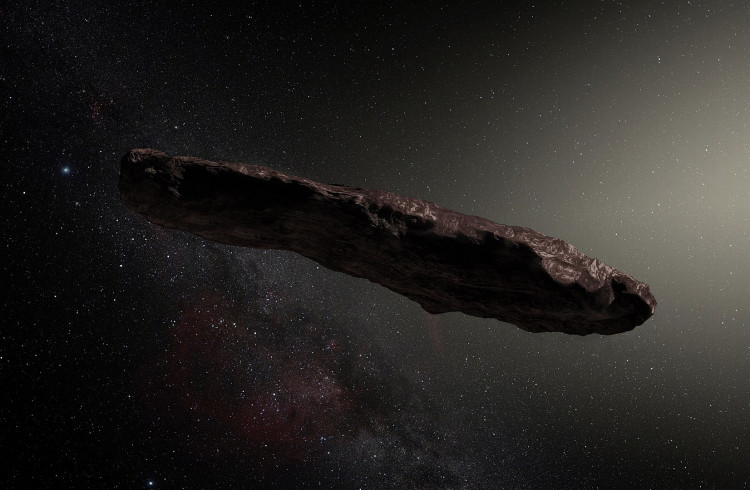'Oumuamua, our solar system's first known interstellar object, continues to elude scientific understanding. One of the most recent theories about what the cigar-shaped visitor is composed of - a "nitrogen iceberg" - has now been debunked as well.
Researchers have described 'Oumuamua as a nitrogen iceberg in an attempt to explain it. But Harvard astrophysicists think that's impossible, and they explain why in a new paper published in the journal New Astronomy on Nov. 5.
When scientists first saw 'Oumuamua racing through our solar system in October 2017, it was doing so at approximately 57,000 mph - far too fast to have come from our solar system.
The foreign object accelerated at a rate that could not be explained by the sun's gravitational pull as it passed the sun, tumbling end-over-end. And there was no observable sign of a propellant, such as water vapor or gases exiting the object and driving it forward, according to scientists.
Scientists are unsure not only of what propelled 'Oumuamua on its slingshot visit into and out of our solar system, but also of its composition.
Alan Jackson and Steven Desch of Arizona State University announced in March that they had worked it out. According to Live Science, the team published two papers claiming that 'Oumuamua was most likely a shard of nitrogen ice that broke off a Pluto-like planet someplace outside our solar system.
This conclusion, however, is not unanimously agreed.
"The moment I saw those papers, I knew that there was no physical mechanism for it to work. And not even the error budget for it to work," Amir Siraj, an astrophysicist at Harvard University, said, referring to the amount of error for the prediction to still be realistic.
Jackson and Desch's conclusion that 'Oumuamua is a nitrogen iceberg is flawed, according to Siraj and his co-author, Harvard astrophysicist Avi Loeb, because there isn't enough nitrogen in the universe to make an object like 'Oumuamua, which is between 1,300 and 2,600 feet long and 115 to 548 feet wide.
Pure nitrogen is extremely rare, according to Siraj, and has only been detected on Pluto, where it accounts for around 0.5 percent of the total mass. There wouldn't be enough nitrogen to form 'Oumuamua even if all of the nitrogen ice in the universe was scraped off every Pluto-like planet predicted to exist.
The enigma of 'Oumuamua, according to Siraj, has yet to be solved. He speculated that some experts may be eager to draw conclusions about 'Oumuamua because, as long as it remains a mystery, the chance of an artificial origin remains.
"If it's still unexplained, you have to consider all possibilities."





